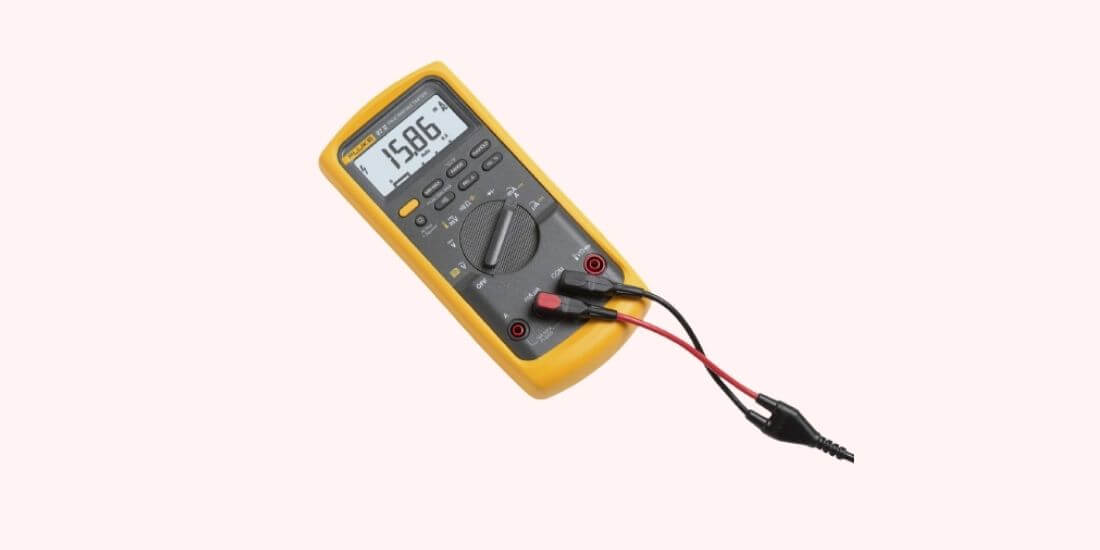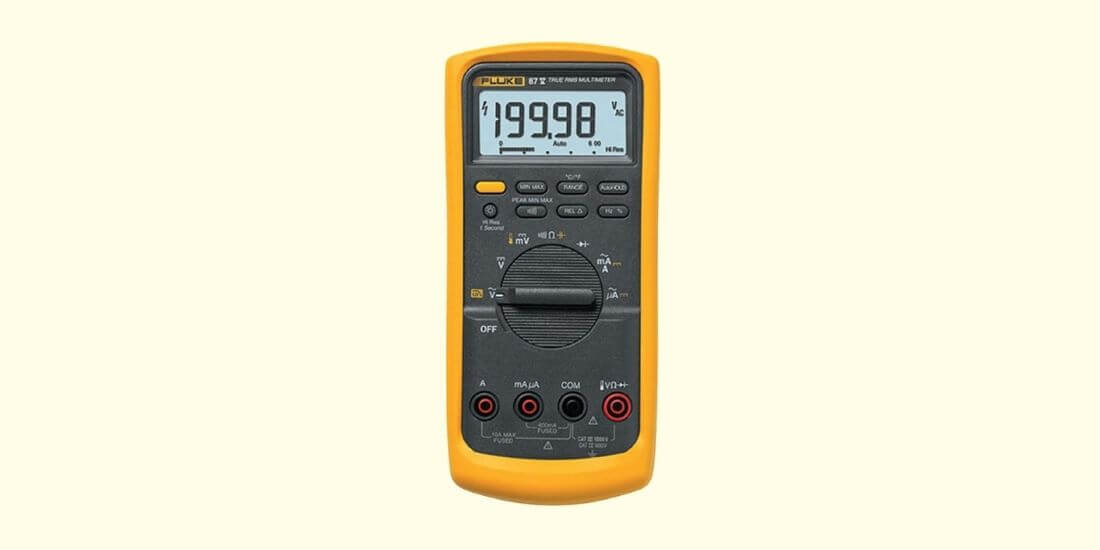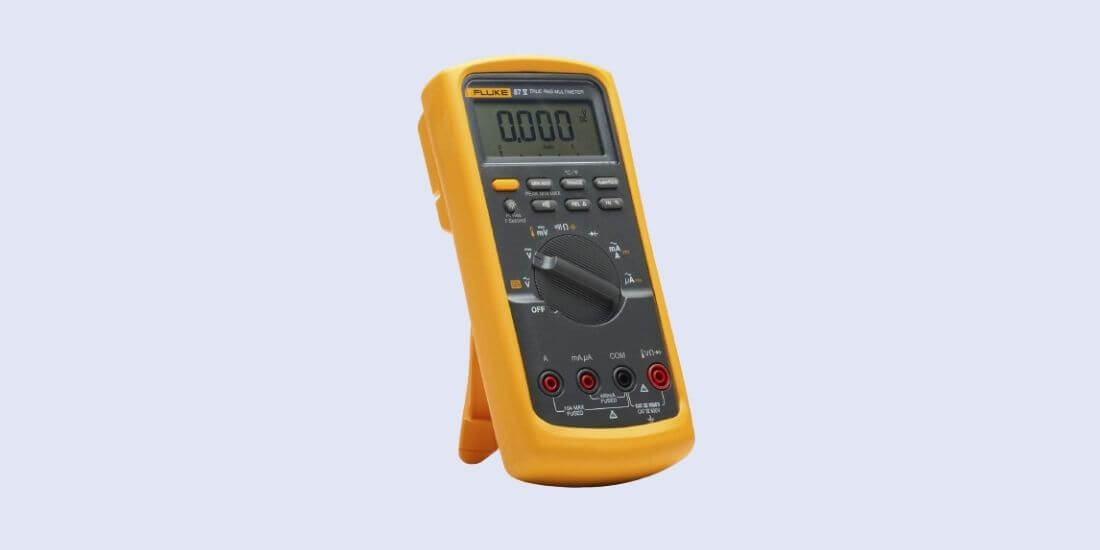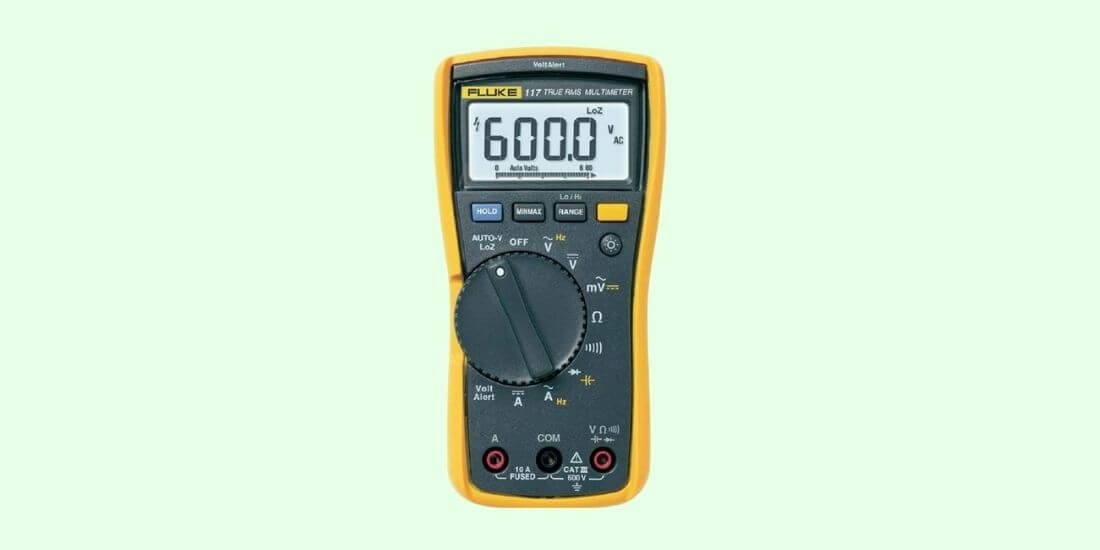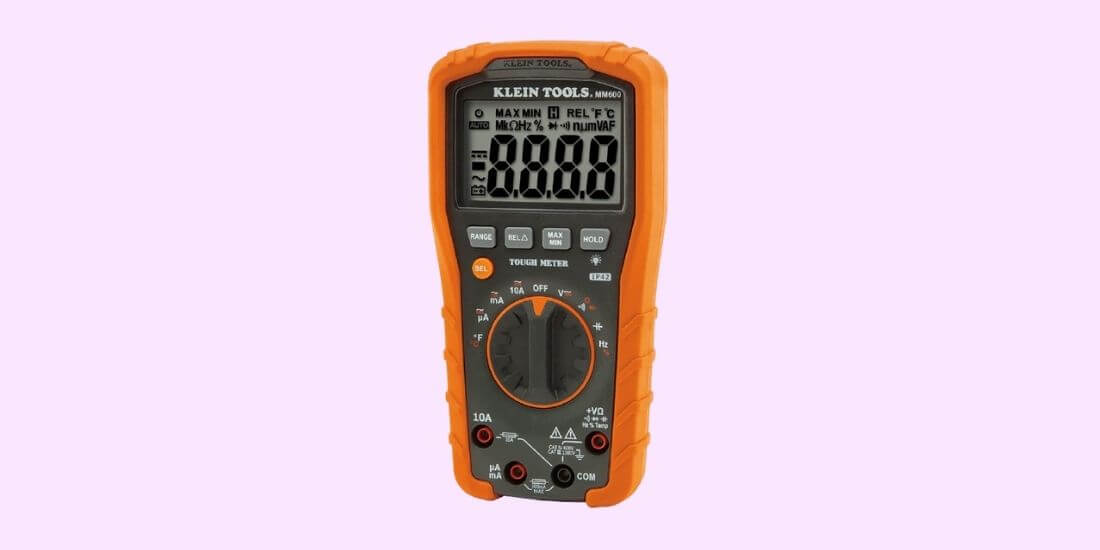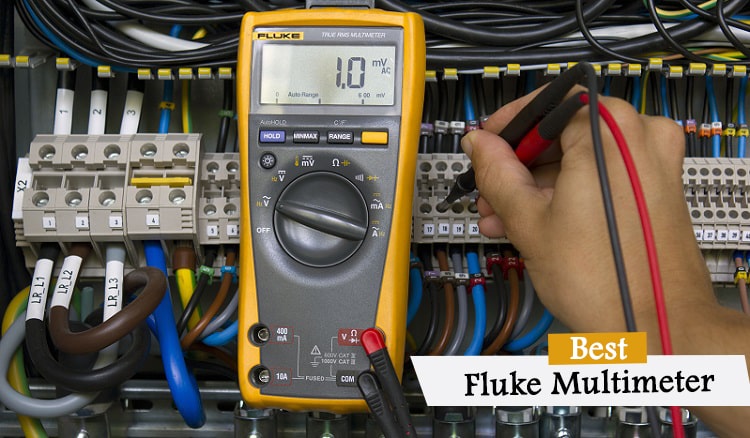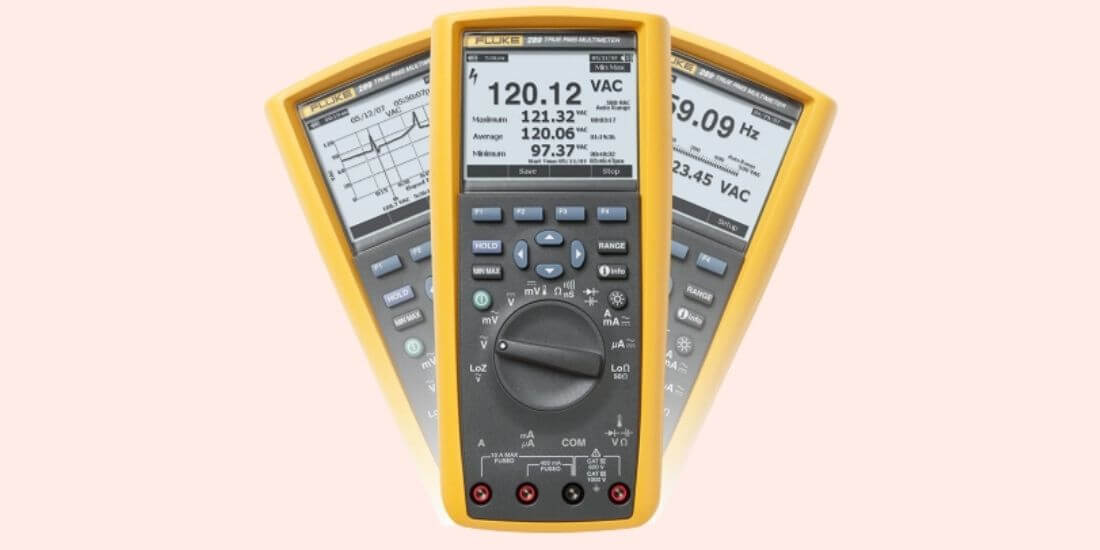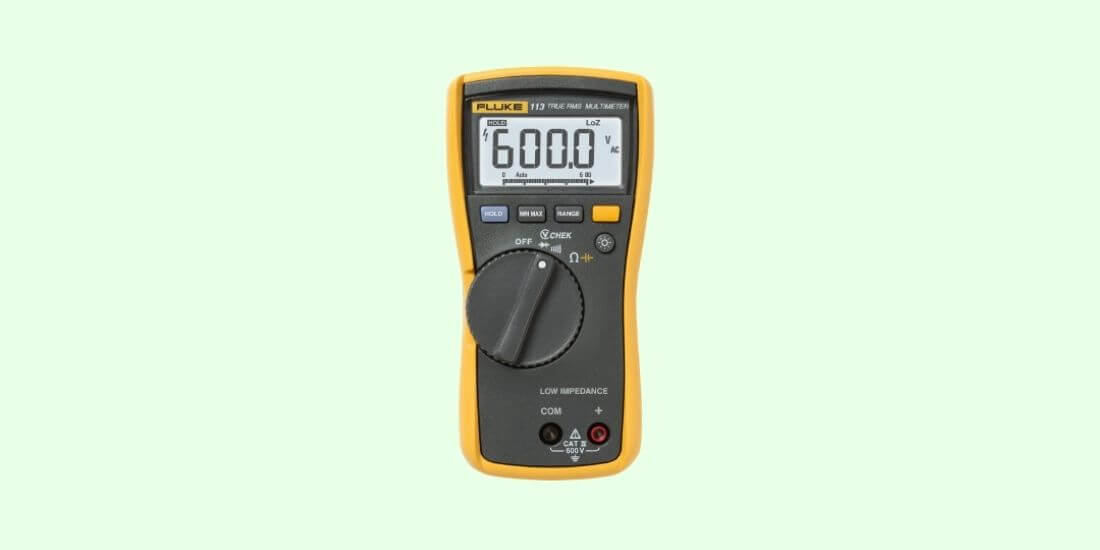Unless you are a technician who needs to alternate between True RMS and automotive meters, any well-built multimeter will work for you.
But when you are going for the best, it’s obvious that you should be considering Fluke.
However, most of the users dangle around Fluke 87V vs 88V when it comes to getting a Fluke multimeter.
Although both these devices differ in being a True RMS one, these two have many similarities.
If you are in a fix between which tool to use, you are in the right place. In this piece, we will be comparing these two meters Fluke 87V vs 88V for you to opt independently.
So, fasten your seatbelts, and let’s roll…
Fluke 87V VS 88V Digital Multimeter Comparison




Last update on 2025-05-31 / Affiliate links / Images from Amazon Product Advertising API
1. Fluke 87V

Key Specifications:
- Manufacturer: Fluke
- Measurement Type: Multimeter
- Maximum amps: 10 A 10 A (20 A maximum for 30 seconds)
- Maximum voltage range: 1000 V
- Display: Digital
- Type: Industrial True RMS Multimeter
- Warranty description: A lifetime warranty is included with every Fluke 87-V.
- Measurement Functions: AC/DC Current, AC/DC Voltage, Capacitance, Duty cycle, Temperature measurement, Resistance, Conductance, Frequency, Diode.
If you are focusing on industrial use, the Fluke 87V multimeter may seem a suitable choice for you.
It comes with great accuracy, satisfactory reliability, and robust build quality at the same time.
- Easy to troubleshoot: While it is built to troubleshoot complicated electrical issues, it can easily be used to take care of any household electrical complexity, as well. Be it a DIY project you are busy with or a typical lab-based electrical works – this one suits all.
- Made in USA: Even though most of Fluke’s tools are assembled in China, the 87V is proudly made in the USA. And that’s not all; it has approval from different authority agencies like CSA, UL, VDE, and TÜV.
- Strong and durable: The very first thing that you will notice on this meter is its tough build quality. It comes with a robust and thick case with a rubbery base that keeps the device safe from any accident. Plus, it doesn’t show any impact even if it is dropped from 1 meter above the ground.
- Impressive digital display: With a sharp and crystal-clear display, the 87V stands to be one of the finest meters for reading. The display is an upgrade of its previous 80-series versions and exhibits sharp digits like never before. This dual display comes with a 6000-count resolution that updates 4 times in a second. Having a backlit display makes it easier for anybody with any vision-strength to take a proper reading. Also, the brightness can be controlled with the pressing of a button.
- Good battery backup: Although the battery is a 9v one, it does support up to 400 hours of operation. Plus, the 30-minute auto-off feature works pretty well to mitigate battery-drainage.
- Variety of dial sectors and buttons: The device has 8 different positions as dial-selectors and 7 other buttons to set a perfect position for accurate measurement. With these buttons and dialers, you can take an advanced reading, as well.
- Ensure best safety: As for the safety issues, the tool has a safety rating up to 1000V for Cat-III and 600V for Cat-IV. So, it is obvious that you can use it in any situation, whether it’s industrial or a lab area you are working in.
PROS
- Comes with a bright dual-resolution display
- True RMS meter for industrial-level accuracy
- Great battery life
- Boasts a removable holster
- Category III and IV safety
CONS
- The battery doesn’t have strong terminals
Latest Guide: Fluke 87 III Vs 87V Multimeter
2. Fluke 88V

Key Specifications:
- Brand Name: Fluke
- Color: Automotive Multimeter
- Item Weight: 3.00 pounds
- Warranty Description: Limited Life Time Warranty
- Measurement Type: Multimeter
- Maximum AC/DC voltage: 1000 V
- Measurement Functions: Current measurements, diode test, pulse width measurements, resistance, continuity, frequency, duty cycle. Temperature and RPM can measure by using optional inductive pickup.
For all those who are into automotive troubleshooting, the 88V can be a promising tool for you.
But that doesn’t mean that electricians who are working in industrial environments or regular home-users can’t get a hold of it.
- User-friendly: Rather, as designed with a pretty user-friendly method, any user can find it handy to use. So, even if you are a DIY guy, you get to get the maximum out of it, too. As for automotive workers, no matter what type of vehicle you are working on – conventional or hybrid, this meter has got your back.
- Variety of measurement functions: With the 88V, you have the privilege to measure RPM, pulse width, peak max/min mode, and many more. It’s a complete solution to automotive electronics measurement, for sure!
- Auto and manual both function mode: The device is, by default, set on an auto-range function. But you can go for a manual mode, as well. You get to select a suitable range to get a quicker response time from the tool. One down-side of the 88V is the absence of True RMS capacity. Because of that, you don’t have the option to measure non-linear Alternative Current voltage. It also has a lot to do with the accuracy of the measurement.
- Strong and durable: As for the outer and inner build quality of this meter, it’s just outstanding. The cover is made from a toughened rubber holster. It’s durable from the inside, as well. The tongue and groove system inside lets you protect the meter from any damage caused by water.
- Pretty good display: Like the 87V, the display of the 88V is also quite convincing. It has a 20000-count, which means it can show up to three digits in the nine hundredth place before you get a reading of 20.00Ω. Again, the display has a two-stage bright backlight. It helps a lot in taking reading when you are working under low-light conditions.
- Powerful battery: The battery inside is pretty powerful. It promises to last for about 400 hours if used normally. But the automatic power-off function may play a key role in expanding the battery life.
PROS
- Offers great automotive functionality
- Rated with Category IV safety
- Equipped with a two-stage backlight
- Long-lasting battery life
- Can measure pulse width and RPM
CONS
- It’s a bit on the bulkier side
Related Article: Fluke 113 vs 114 vs 115 vs 116 vs 117
Fluke 87V or 88V Digital Multimeter?
True RMS
There’s an obvious difference between these two Fluke 87V vs 88V – True RMS. While the 87V comes with a true RMS system, the 88V doesn’t.
So, you get to notice a slight difference in case of the accuracy of the measurement. Nevertheless, the 88V, being an automotive meter, comes in handy in case of vehicle electrical measurement.
DC Accuracy
Both the meters differ in DC accuracy, as well. The 87V is accurate to 0.05%, while the 88V is accurate to 0.1%.
RPM Measurement
Being a default automotive multimeter, the 88V can measure RPM, while the 87V is not capable of such measurement. This difference applies to pulse-width measurement, as well, where the 88V has the upper hand.




Last update on 2025-05-31 / Affiliate links / Images from Amazon Product Advertising API
Frequently Asked Questions
Is Fluke 87V a True RMS multimeter?
Yes, the 87V is a True RMS meter that lets you measure non-linear AC voltages. You won’t get to measure it with the 88V one.
Can you use the 87V for DIY tasks?
Although the 87V is designed specially to tackle industry-level electronic issues, it still has the user-friendliness to be dealt with in household tasks. You can use it for DIY projects or home-electrical solutions, too.
Which one is better for automotive measurement – 87V or 88V?
By default, the Fluke 88V is designed to be used in automotive solutions. So, it would be better to use the 88V for such measurement tasks.
What should I look for when buying a multimeter?
You must look for three things, at least.
i. The capacity of selecting a voltage-range
ii. The capacity to measure AC and DC voltage
iii. The capacity to measure ohm
Which one is the best to measure RPM?
Among Fluke 87V and 88V, the 88V has the sole capacity of measuring RPM.
Fluke 88V vs Fluke 87V Digital Multimeter
Choosing between Fluke 87V vs 88V is not hard if you have a clear idea about what you intend to do with such a multimeter.
If your task is in need of a True RMS device, it’s easy to go for the 87V. On the other hand, if RPM or pulse-width measurement is your kind of work, the 88V will satisfy you the best.
Nevertheless, we believe our reviews will help you reach the right decision for your own tasks. We wish you luck in finding one!




Last update on 2025-05-31 / Affiliate links / Images from Amazon Product Advertising API
-
Changing a lightbulb is no rocket science, but thanks to the Internet, we can fix…
-
Digital multimeters can be used to measure multiple electrical variables, which can benefit both amateurs…
-
Suppose you've got two devices right there on your table. One of them came from…
-
Imagine using the wrong voltage connection to your electronic project and turning a simple device…
-
Multimeters are critical tools for numerous business professionals. Many technical experts, such as engineers, IT…
-
Are you about to create new electrical lights, switches, and a ton of wires? Do…
-
Are you looking for a multimeter that can measure AC voltage indefinitely? In that case,…
-
True-RMS multimeters can be handy tools that serve multiple purposes at once. They include many…

